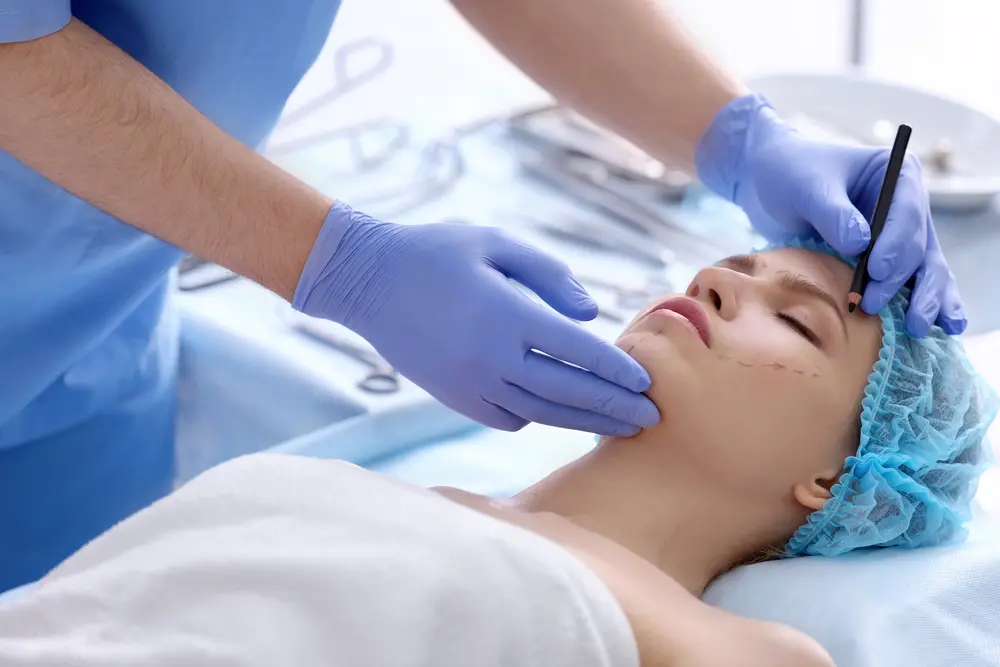Sutures, Stitches and General Wound Care Advice
The following advice is primarily targeted to post plastic surgery wound care and sutures and stitches. There may be other factors to consider, if when discussing traumatic wound care or a burn or neurosurgery surgery etc. Additionally this advice is informed by Dr Berman’s extensive training in plastic surgery, over 20 years working as a plastic surgeon, and is shared by many other plastic surgeons. However, it is important to speak to your own plastic surgeon since he/she may have different ideas and it is important to respect their opinion.
A common question is: what is the difference between sutures and stitches? They are the same thing. A wound/incision can be closed with superficial skin sutures; glue or with deeper sutures placed, followed by skin sutures. The skin can be closed with either dissolving sutures or permanent sutures. The latter do need to be removed. Once the sutures are placed, sometimes a dressing or a bandage is applied.
What kind of Suture or Stitches will be used?
If a wound is deep, it will usually be closed in layers with sutures that will gradually dissolve on their own. The reason for closing the wound in layers, when it is deep, is to close the “dead space”. This means ensuring there is no gap under the skin, because it may lead to either a depression in the overlying skin, or this space may fill with fluid or blood. Closing the wound in layers will take some tension off of the skin closure, resulting in a better final scar. Sometimes deeper tissues, such as a tendon in hand surgery, this may be closed with a permanent suture.
The skin can either be closed with a dissolving suture or a permanent suture which will need to be removed. There is no absolute correct answer for when each of these two options will be used.
In general, Dr Berman closes body incisions with a subcuticular dissolving suture – which means that this suture will gradually dissolve. It passes back and forth, in the dermal level (through the skin). This is the preferred option for the patient because it does not leave any external suture marks and no sutures need to be removed. The incision is then covered with steristrips, in layman’s terms – Scotch tape for doctors. Dr Berman uses this as the preferred method because the wound requires no care by the patient. It is recommended that the steristrips be removed after 10-14 days post surgery and from that point onwards a scar cream/gel should be used.
On the face, the above mentioned technique is often used, however occasionally a permanent suture is a better option. A permanent suture needs to be removed, and is used for procedures such as an upper blepharoplasty. These are usually removed in 5-7 days. On areas, such as behind the hairline (for a lateral brow lift) or behind the ears (for an otoplasty) or inside the mouth or on the lip itself, I will use a dissolving suture.
What wound care is recommended?
One of the reasons for closing wounds with a subcuticular suture and then steristrips (preferred method after a tummy tuck or breast surgery), is that no wound care at all is required. Usually at the time of surgery, a gauze will be placed over the steristrips, so that if there is some bleeding, it will not create a mess. Remember the local anesthetic contains Epinephrine, which stops the bleeding (by vasoconstricting) and when it wears off 3-6 hours later, it is quite common to get some oozing or bleeding (due to vasodilation).
If steristrips are not placed or if they fall off prematurely, clean the wound with half strength hydrogen peroxide and a thin coat of antibiotic ointment. Most antibiotic ointments are acceptable, however Neosporin should be avoided because the ingredient neomycin can cause an allergy to develop. The wound should be cleaned twice per day. In general, there is no need to do any type of cleaning or dressing to a sutured wound after 10-14 days.
When can I shower?
This topic is surrounded by a tremendous amount of misinformation. While there are always unusual exceptions, for the vast majority of cases patients are allowed to shower by the following evening. If there is any gauze placed, it needs to be removed before showering and then the wound can be cleaned in the shower with soap and water. Most patients are worried about injuring the wound, however it is far more important to remove any debris and old blood etc and to keep the wound clean. If possible it helps to have the sutures or stitches above heart level.
There are doctors who claim patients should avoid getting the surgical site wet for numerous days or a week etc. However this is harmful because the surrounding unwashed area will get far more germs and bacteria etc increasing the chance of infection.
After the first shower, it is better to leave the sutures/steristrips open to the air. According to Dr Berman’s expert opinion this can help the wound heal faster and better when they are open to the air. Of course, use commonsense – for example: If you have a cut on your hand, wear a glove when changing a baby’s diaper etc. For most sutured wounds, they are quite air and water resistant and they are not likely to get infected. Dr Berman suggests taking showers for the first 10 days as the fresh water is cleaner than stagnant bath water. Hot tubs should also be avoided for the first 10 days but a few days after the sutures are placed a private pool can be acceptable upon the following conditions: the wound is clean and the pool is chlorinated. However it is recommended to seek guidance from your doctor.
When will the sutures or stitches be removed?
If the sutures or stitches are not dissolvable and need to be removed, there are two categories. Sutures on the face will be removed in 5-7 days and sutures on the body will usually be removed in 10-14 days.
What can I do to speed up wound healing?
There is a lot of speculation in this area. Provided you have good nutritional status, these wounds almost always heal on time. If you are a smoker, it is advised to avoid any and all nicotine products for 4-6 weeks before surgery and for at least 3-4 weeks after surgery (if you can do this, then you may as well quit for good!). All nicotine products are vasoconstrictors which means they decrease blood flow to the wound. This can definitely compromise the healing process.
Is there a role for additional supplementation if you have good nutritional status?
This is an ongoing discussion. It certainly does not hurt to take Vitamin C and a good multivitamin. There are a multitude of vitamins and minerals that play a role in wound healing including Mg, Zinc, B vitamins etc. If you are significantly overweight, if possible, it is suggested to try and decrease total body fat. However, if you have a fairly healthy diet, and don’t smoke, there is no need to take any additional supplements or vitamins to aid in the recovery of sutures and stitches.
Contact us for a consultation!
Contact us for a consultation







